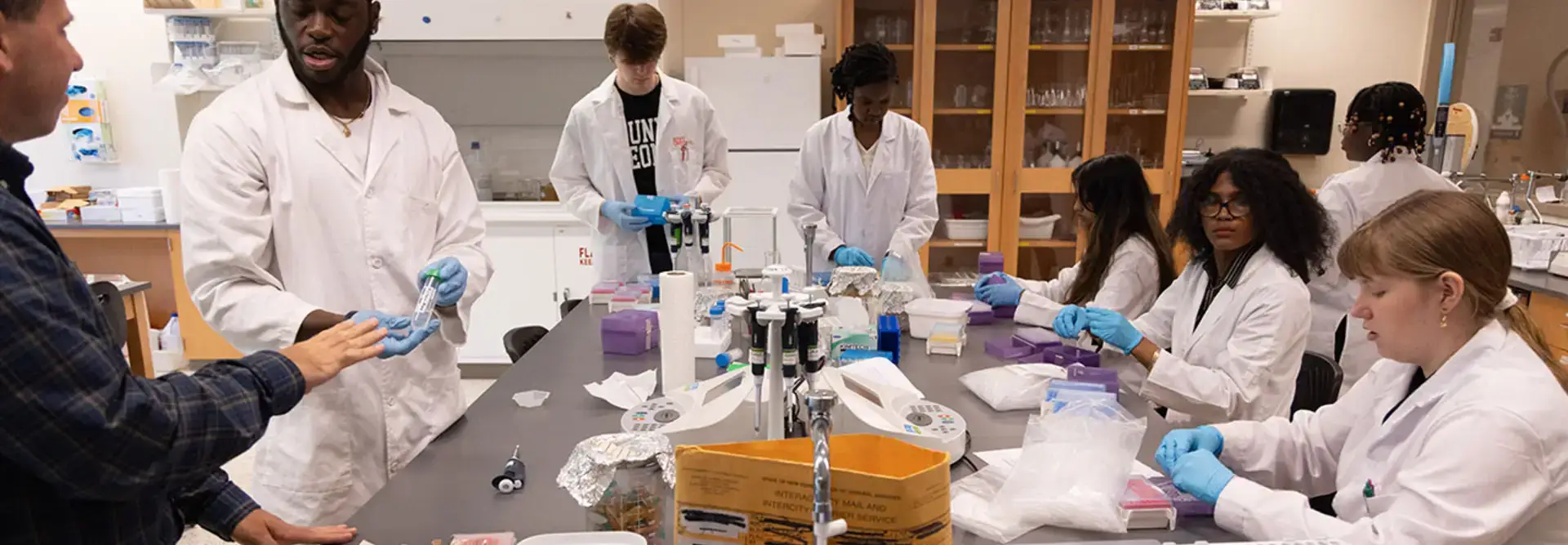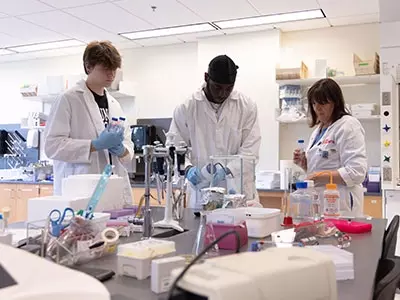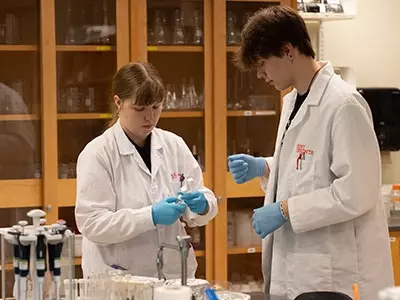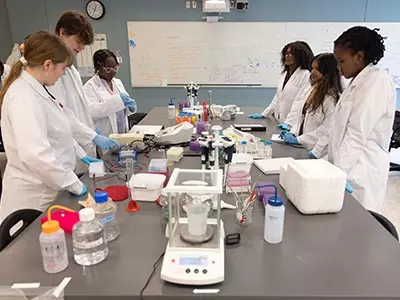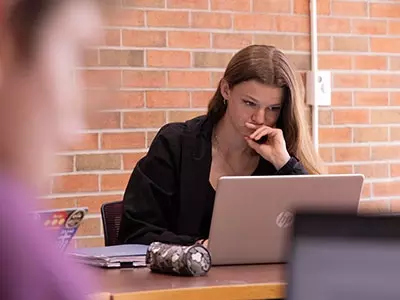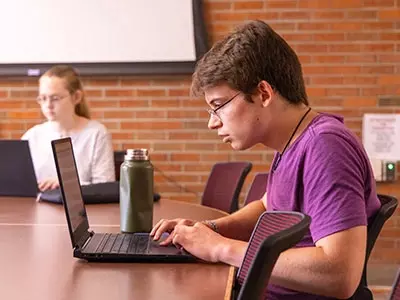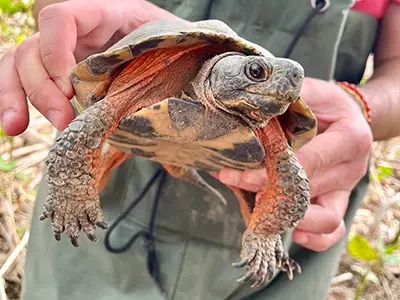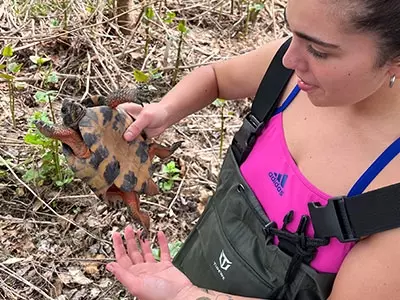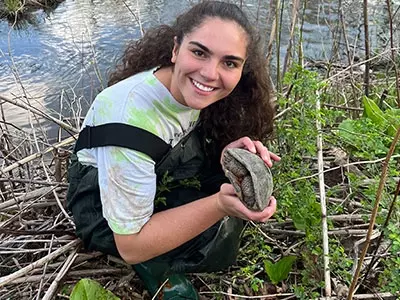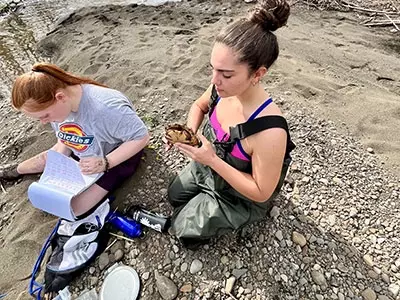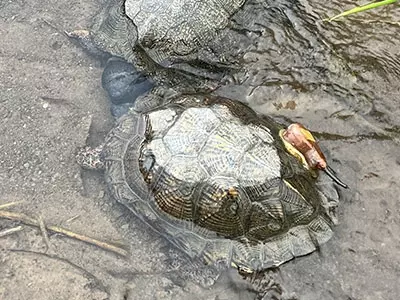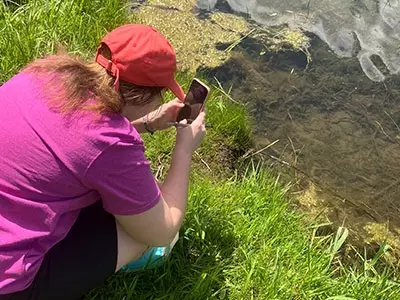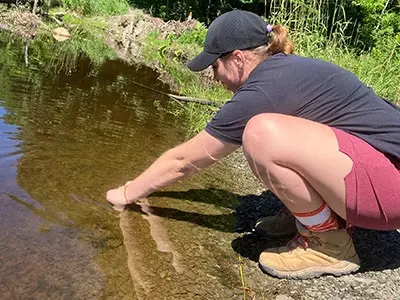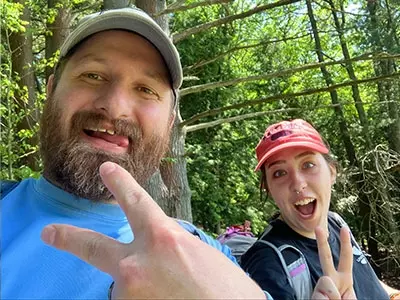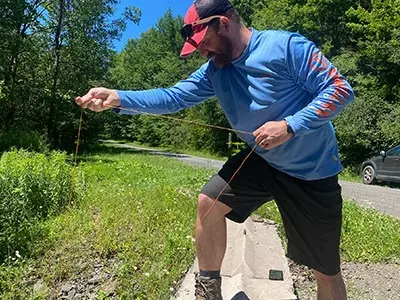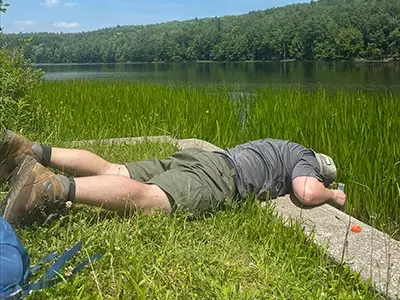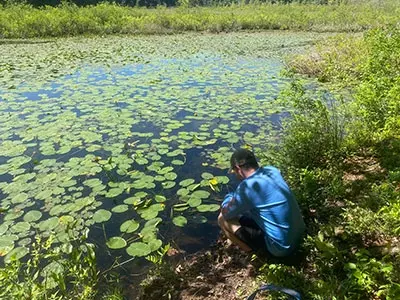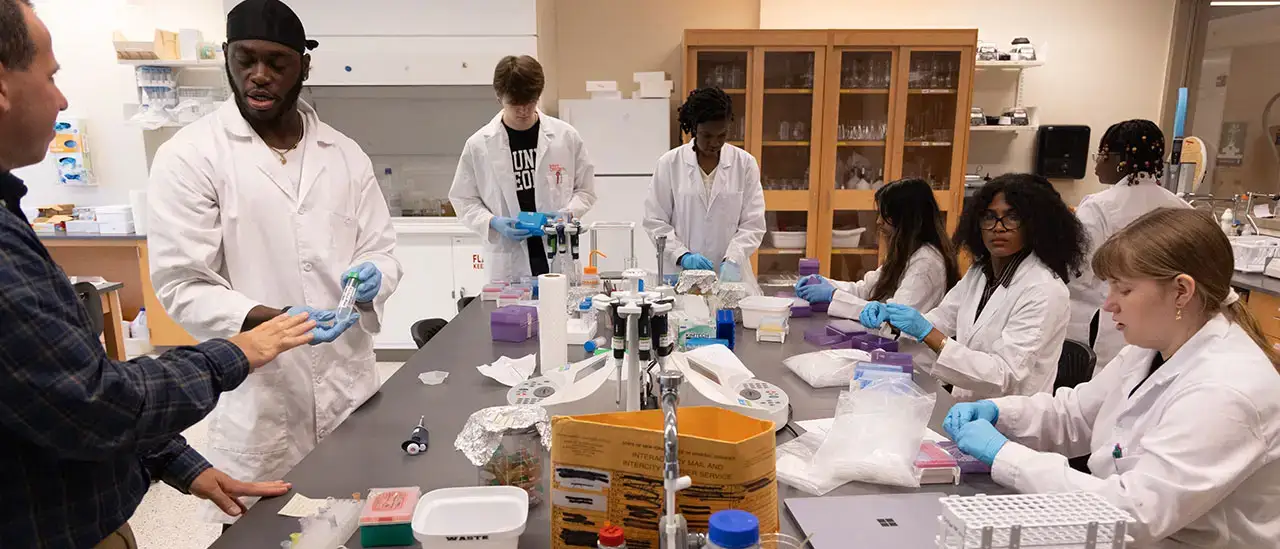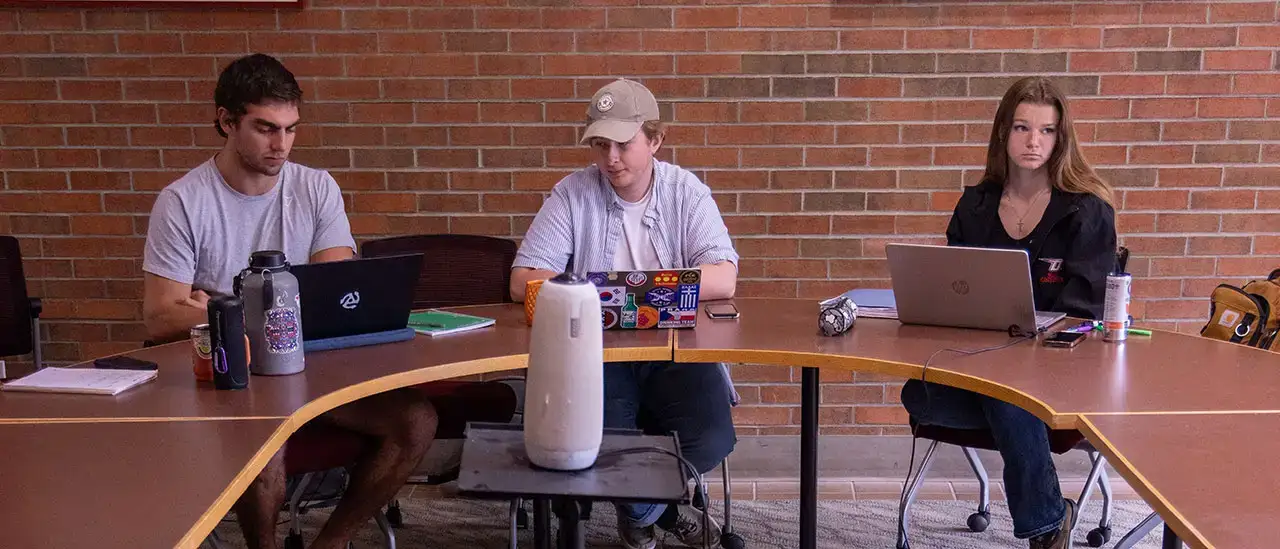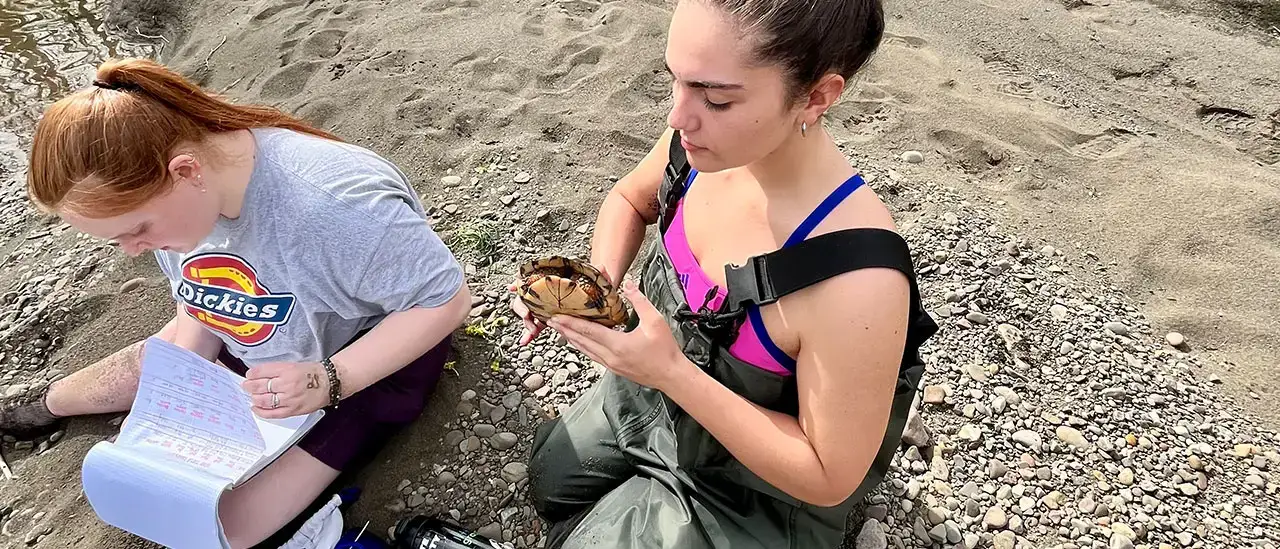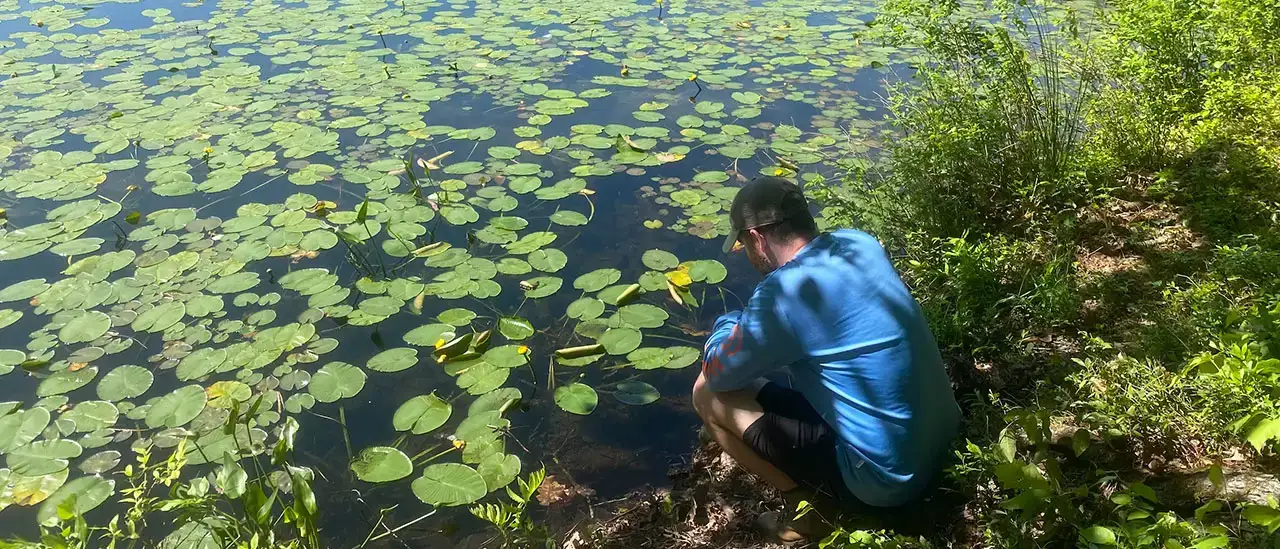SUNY Oneonta students are getting firsthand experience in their fields of study this summer through research and creative projects on topics ranging from endangered turtles to an abroad Shakespeare-intensive.
Thirty-six SUNY Oneonta students are involved in research and creative projects on and off campus through the university’s Summer Research Fellowship Program. Fellowship grants assist undergraduate and graduate students with costs related to participating in summer research and creative activity in either an independent or group project.
SUNY Oneonta faculty are mentoring students in projects ranging from investigating heat disparities in smaller urban zones to a Shakespeare-intensive study in Prague in the Czech Republic. Some of the research projects are continuations of projects from previous summers, such as the “Synthesis Completion of Melicopteline Derivatives,” “Characterization of Seiche in Regional Lakes” and “Detecting Exoplanets and Obtaining Stellar Spectra from the SUNY Oneonta Observatory.” Other summer research projects like “Implementing an Emotion Management in Sport Program: Training Staff for Summer Camp” and “(Re)Telling Stories of Change with Artificial Intelligence” are the first of their kind.
The 2024 Summer Research Fellowship recipients receive financial support from University Advancement’s Student Research and Creative Activity Grant Fund, with additional funding from Alumni Engagement. Students receive grants of up to $3,000 each, with a maximum of $6,000 for two or more students working together on a single project. Students who must remain on campus for their research stay at SUNY Oneonta for free this summer. The students will share their projects with the campus community during the Summer Research Fellowship Showcase from Sept. 23 to 26.
“The summer fellowships provide students with a great opportunity to do concentrated, in-depth, faculty-led research and creative projects without sacrificing their ability to earn money at a time when so many students are home working summer jobs,” said Audrey Porsche, associate director of scholarly activities.
Team Oneonta Prepares for iGEM This Fall
In a partnership with students and faculty from Hartwick College, SUNY Oneonta’s iGEM (International Genetically Engineered Machine) team is preparing for the annual iGEM Jamboree this fall in Paris, France. This year, the team is focused on improving the sustainability of wastewater reprocessing by developing biological tools that can adjust pH and remove undesirable or hazardous contaminants. Team Oneonta’s project was inspired by the recent surge of investment in advanced manufacturing in New York following the CHIPS and Science Act.
“I love their motivation and enthusiasm,” said Associate Professor of Chemistry and Biochemistry Kelly Gallagher. “They’re getting excited about what they’re learning and they feel like they’re doing something real – and that’s energizing for me. It helps students see scientific work in the context of how it happens in the real world, and if science is going to do good for people or produce a product not just for use in the lab.”
The team is split into two groups, with one group focused on the scientific development of the technology under Gallagher, SUNY Oneonta faculty Jill Fielhaber and Bill Vining, and three Hartwick faculty members. The other group of students is considering the ethical and compliance issues in modern biomedical science with Adjunct Faculty Daniel Patrone from the Philosophy Department, reviewing Gallagher’s group’s compiled data and research.
“My favorite part of working on this research so far has been the abundance of collaboration among such a variety of demographics,” said Early Childhood Education rising senior Taylor Schroeder at SUNY Oneonta and member of Patrone’s group. “I have been able to speak with CFOs, scientists and researchers, community members and best of all, the diverse mindset and career paths of our very own SUNY Oneonta and Hartwick students.”
Habitat Selection of Wood Turtles in the Oneonta Area
At a stream in the Oneonta area, Associate Professor of Biology Elizabeth Bastiaans and her students, Madison Stanley and Victoria Prouty, are collecting and analyzing data to help conserve the local population of wood turtles. Their research aims to answer the question: “In an area highly impacted by invasive species and anthropogenic activity, what types of habitat characteristics do wood turtles preferentially select?” The variables Stanley and Prouty are recording include water temperature, stream clarity, weather, sunlight, foliage type, available food sources and whether the turtle was found on land or in water.
“Both students are collecting data that will help us conserve our local population of wood turtles, an endangered species that lives in rivers and forests across northeastern North America,” said Bastiaans. “Wood turtles are usually considered sensitive to human impacts, but we have a surprisingly high number of them in our area, and we want to better understand what habitats and potential prey species to conserve or restore so we can keep this population around.”
This summer, Stanley, a Biology major who received a Summer Research Fellowship grant, is studying how wood turtles adapt in their natural habitat with high levels of human impact. Prouty, a Biology graduate student at SUNY Oneonta, is collecting tissue samples from local turtles and is using a technique called stable isotope analysis to reconstruct their diets. “She’s comparing samples from modern turtles to samples from turtles in our vertebrate museum collection, collected about 60 years ago before the species was endangered,” said Bastiaans.
Water Sampling for Trace Elements and Stable Isotopes in Otsego County
Throughout Otsego County, Assistant Professor of Geography and Environmental Sustainability Jacob Warner and rising senior Cassidy Celic are collecting water samples as part of a larger research collaboration project with the University of Arizona, Louisiana State University and other institutions. The larger project has researchers studying an aquatic snail species known as the marsh rams-horn and developing a paleoclimate archive to reconstruct the hydroclimate of understudied regions in North America.
“We’re collecting samples from water bodies all over Otsego County for chemical analysis,” said Warner. “We will have these samples analyzed for stable isotopes of oxygen and hydrogen, and hopefully also various elemental concentrations of strontium, barium, magnesium, calcium and others. These analytical parameters will tell us about the underlying bedrock’s weathering, pollution, local water cycle and local hydroclimate.”
Along with water samples, Warner and Celic are recording what they see in other plant and animal life, climate and other aspects of the environment. Combined with collecting previously published data for comparison, their goal is to create an environmental map of Otsego County primarily focusing on water chemistry. “This type of map is useful for geologists, archaeologists, climatologists, biologists, forensic scientists and anyone interested in the chemistry of surface waters,” said Warner.
“For this project, I had to find and map out various open access bodies of water, like creeks, ponds, lakes, all across Otsego County, collect samples of water and weather data, and transcribe previously published data from the county,” said Celic. “My favorite part of working on this research is getting to explore more of Otsego County that I wouldn’t have seen otherwise. I’m able to explore and create some core memories while doing something I love!” After graduating, Celic plans to work in New York state, in either the forestry or conservation and research fields.
